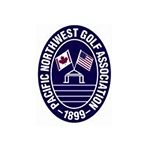Handicap Hub: Myth-Busters Round One - Handicapping
By Kelly Neely, Sr. Director, Handicapping & Course Rating
Click Here for Handicap Hub Archives
Myth-Busters Round 1: Handicapping
I’m afraid snarky rules folks can be a bit like the Grammar Police (hello – guilty here!) as it seems like we’re constantly correcting a myriad of misconceptions. And advising golfers as to why the use of the precise word is central to accurately applying a rule: “must” vs. “may” is an obvious example.
To be fair, it’s quite easy to misinterpret the Handicap System, considering all the policies, procedures and formulas to keep straight. So let’s indulge in a little fun myth-busting:
I don’t play in tournaments, so I really don’t need a handicap.
Many people are intimidated by the pressure of tournament play, and it brings to mind high-profile events like the Oregon Amateur. But the reality is that the percentage of members playing in that type of event is very small. There are hundreds of other fun tournaments with varying formats going on all over the region. At some point your brother is going to bug you to play in a corporate outing and he’ll remind you of that time you punched his lights out when you were kids. It’s easier to just cave in and sign up for a handicap than deal with any residual childhood guilt.
My handicap must be wrong, as it seems too low. I thought it was taking the average of all my scores.
The Handicap System IS calculating averages, but ONLY the average of your lowest scores (or more precisely, your lowest differentials). If you have twenty rounds in, the system takes the better half to give you a measure of “potential ability” or what I like to call “peak performance.” This is what you’d play to 20-25% of the time. If the system was using all scores, you really wouldn’t have incentive to improve, nor would have all the information you need when playing against another golfer. Don’t you want to know the best your opponent can score?
I don’t need to post my high scores, because they won’t be used anyway.
The perfect way to change your thinking on this one is to stop thinking altogether and just post ‘em. Post ‘em all. The fact is that every score represents a necessary piece of data that the system must have to be able to sift out the right handicap for you. While it’s true that high score differentials – as compared to low ones – won’t be chosen at a particular revision to calculate your Index, they still count as non-counting scores! The more data the system has, the more accurate your handicap will be.
I’m a 30 handicap – why can’t I ever reach a par 4 in two shots?
The old adage – “it’s not about you” is true here. Par is based on one thing and one thing only – how far the Scratch Golfer (as defined by the USGA) can hit the ball and how many shots it takes that Scratch Golfer to reach the green. Note: All par guidelines also include two putts on the green. No matter your handicap, you’re better off thinking about “personal par.”
Gretchen Yoder, our Course Rating Manager, likes to tell her own story here: “Hole 16 at Forest Hills GC in Cornelius is my nemesis. I know it’s a par 4, but I consider it a personal par 6. With the downhill lie, the water crossing, and the tiny green, I’m happy to walk away with a six! Many people think it should be a par 5 because higher-handicappers need to lay-up. But a Scratch Golfer can reach the green in two on a regular basis, which makes it a par 4. I like “personal par” because it’s relative to ME and MY abilities, not some number on a scorecard. I have seen a pee-wee golfer birdie that hole. Wasn’t sure if I wanted to congratulate him or toss him into the pond.”
I have an R next to my Handicap Index, so I’ve been “restricted.”
Nope. The R means “reduction” and indicates that a procedure of the Handicap System called 10-3 is at work. It’s simply an alternate calculation of a Handicap Index that can be applied to golfers who have at least two tournament (T) scores, played in the last 12 months that are a minimum of three strokes better than their current Index.
The smallest reduction that can occur is one stroke – the biggest one is too horrifying to contemplate. As the system does all the calculations, I won’t bore you with the icky math but just know that there is no such thing as a “restricted” handicap. Unless you receive the very rare WD – a withdrawn handicap – which means it’s been revoked by your Committee and you’re going to have to go sit in the corner and beg forgiveness.
Our greens have been punched and sanded. We’re going to just use the “Two-Putt Rule.”
Despite the fact that Par Guidelines do include two-putts on the green, as was mentioned above, the “two-putt rule” doesn’t exist.The correct Handicap System procedure for adjusting a score on a hole that was started but not completed, is to use Most Likely Score. 
It doesn’t matter why you can’t complete the hole – whether the match was over, you couldn’t play the green because it was punched and sanded, or your Mom called (why isn’t your phone on mute?). Most Likely Score is the number of strokes you’ve already taken, plus the number of strokes it would take you to finish the hole more than half the time. The total would be derived from the golfer’s best judgment about their own game and ability in a specific scenario, and is not an all-inclusive number.
The Handicap System isn’t a rule book, it’s a guidebook.
While there are certainly parts of the System manual that fall into gray areas – such as giving plenty of discretion to the Handicap Committee (modifying a player’s Handicap Index for an injury, for example), there is no doubt that the USGA Handicap System contains much more than mere suggestions. The current 137 page manual is infused with the word “must” so many times I lost count, and I’m pretty sure “compliance” doesn’t mean “maybe.” In fact, next year with the launch of the WHS – the World Handicap System – the manual will actually be called “The Rules of Handicapping.”
Check back to the Handicap Hub in May where we delve into Myth Busters Round 2: Course Rating.
|
Questions? Contact Kelly in the OGA Handicapping & Course Rating Department at (503) 981-4653 x226 or Click Here to Email Your Question |








